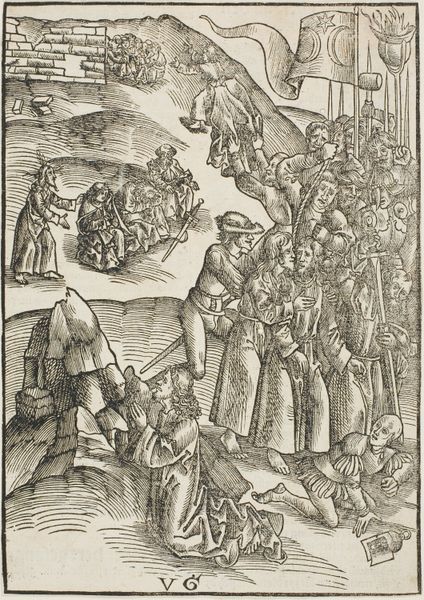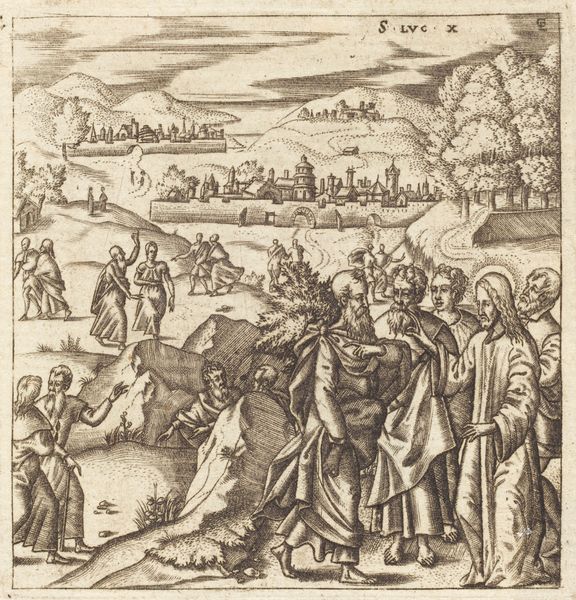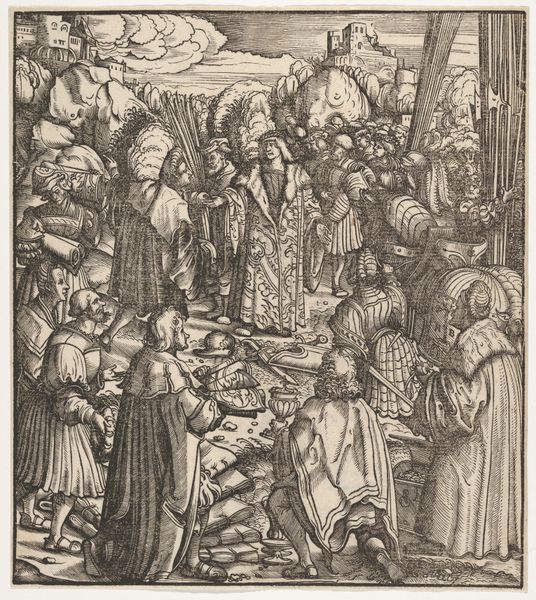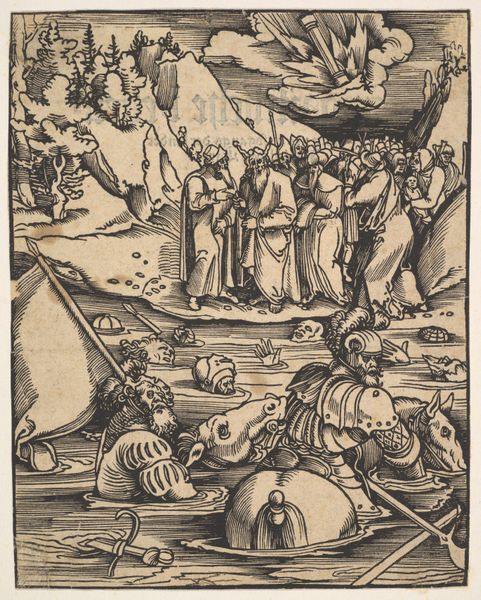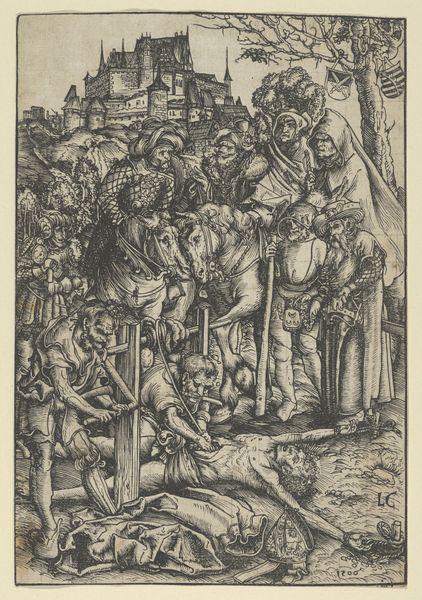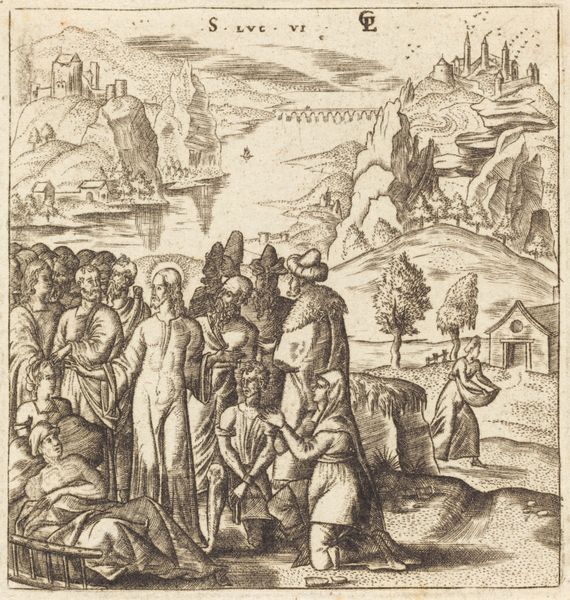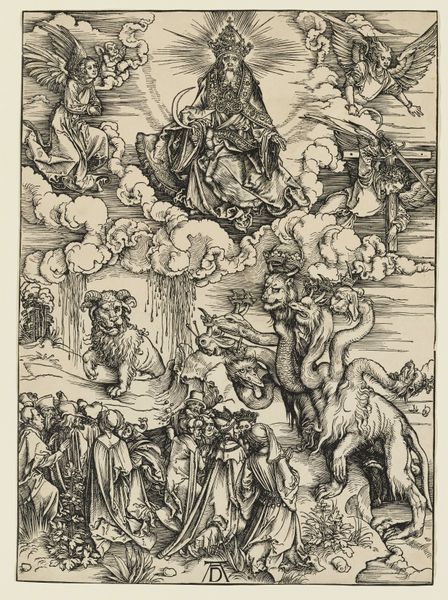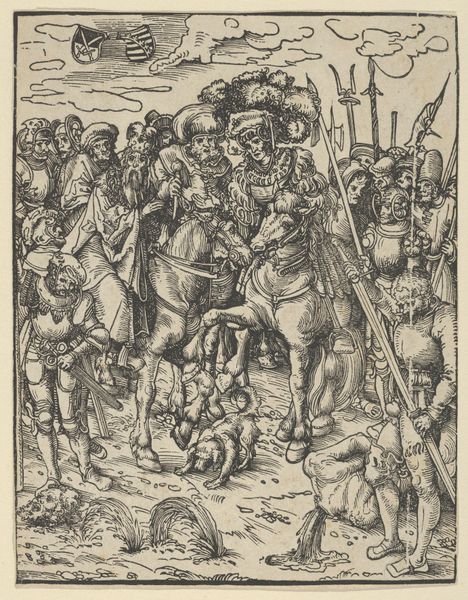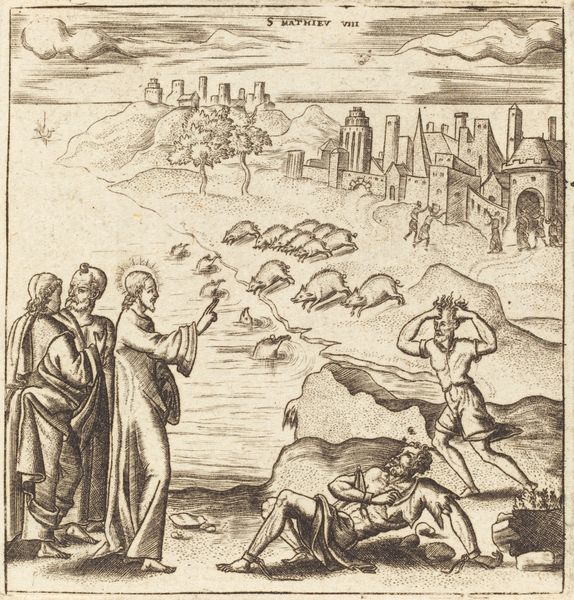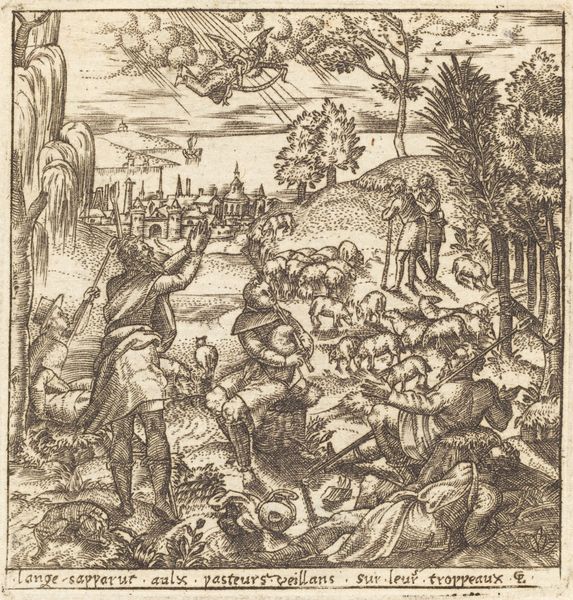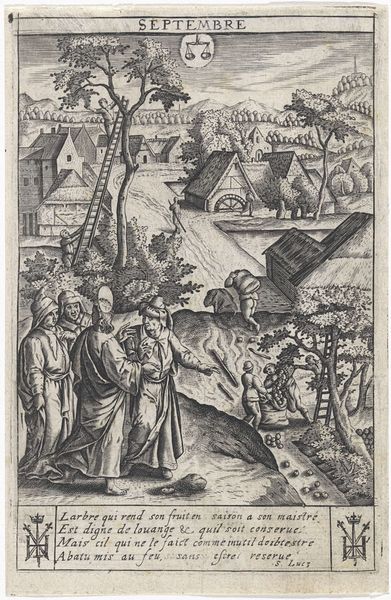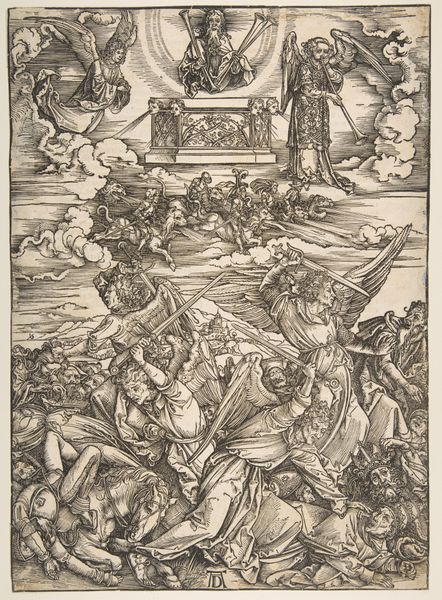
Christ's Entry into Jerusalem, from Passio domini nostri Jesu Christi c. 1503
0:00
0:00
drawing, print, paper, woodcut, engraving
#
drawing
#
narrative-art
#
pen drawing
# print
#
pen illustration
#
pen sketch
#
paper
#
woodcut
#
genre-painting
#
northern-renaissance
#
engraving
Dimensions: 222 × 157 mm (image/sheet, trimmed within block mark)
Copyright: Public Domain
Curator: Here we have Urs Graf’s woodcut, “Christ's Entry into Jerusalem,” created around 1503. The print is currently part of the collection here at the Art Institute of Chicago. Editor: What strikes me immediately is the starkness, the quality of the lines etched into the material to depict the scene. It’s dense, detailed, and rather compelling in its graphic directness. Curator: The visual dynamics are indeed assertive. Graf uses contrasting lines and textures to differentiate the figures, the architecture of Jerusalem, and the natural elements of the landscape, achieving a textured pictorial plane. Note, in particular, how the materiality of the printmaking process – the carved wood itself – directly influences our interpretation of form. Editor: Yes, and that influence speaks to the conditions under which this image came into being. Woodcuts at this time weren't exactly luxury goods; they were a more accessible form of visual communication. We can think about the labor involved: the skilled artisan carefully carving the design in reverse, bearing in mind the constraints and affordances of the wood. What about the audience? Curator: Precisely. While the print depicts Christ’s entry, Graf has manipulated spatial and symbolic elements. He's flattened the space somewhat, emphasizing a contrast between the figures greeting Christ with palms and, strangely, figures hanging from gallows outside of Jerusalem. Semiotically, the juxtaposition sets up a profound commentary about earthly power versus spiritual deliverance. Editor: And it’s difficult not to consider the societal context of its production: Reformation-era Europe. Images played a vital role in circulating ideas, propagating narratives, and even fomenting dissent. The means of production directly relates to the image’s potential impact on public opinion. The labor required to create the piece also meant mass distribution was accessible. Curator: In that case, we can understand the relatively simple, unrefined lines of the medium and design as integral to both its availability and the message's forceful nature. Through formal decisions and stark compositions, Graf compels an immediate emotional and intellectual engagement, asking viewers to confront faith, justice, and worldly power. Editor: A perspective rooted in the actual conditions under which such objects were conceived. Thinking about how it got here is as important as considering the lines that make up the image. Curator: Absolutely, a view into the socio-historical material realities that the work represents.
Comments
No comments
Be the first to comment and join the conversation on the ultimate creative platform.
